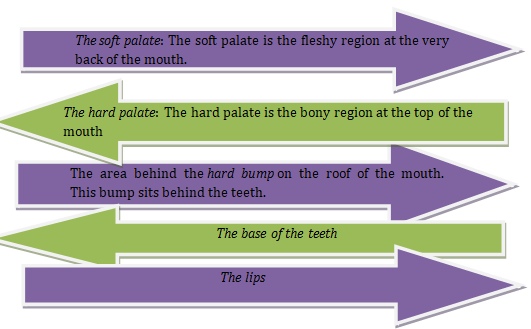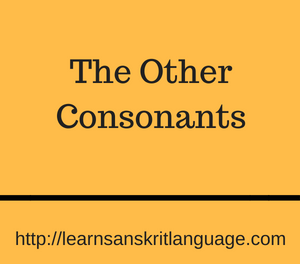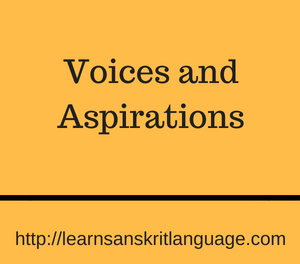Further consonants are divided into two parts; stops and nasals. Stop consonant are produced by blocking the air in the back of the mouth and then releasing it. The release of the air will create a sound. For example the letter k is a stop consonant for it is pronounced while holding the air and then releasing it. The nasal consonant is where the air is blocked at the tip of the mouth and the released through nose. For example letter m is pronounced while holding the breath at the tip and then releasing it through the nose. There are five point of pronunciation in Sanskrit. They are as follows.
The soft palate consonants:
In order to produce this sound, you need to stop the air at the soft palate, and in order to do that, we use the base of the tongue.
k as in kill “ka”
na as in lung “na”
The hard palate
In order to produce the sounds of such consonants, you need to stop the air at the hard palate and in order to stop the air; we need to use the middle of the tongue.
ca as in chose “cha”
na as in night “na”
Retroflex Consonants
Retroflex sounds comparatively to others are hard to understand. To produce the retroflex consonants, we stop the air behind the bony bump on the roof of the mouth and in order to do that we use the tip of the tongue. Again, none of these sounds appear in English. It is called retroflex because the tongue moves backward “retro” (backward) “flex” (bend). Following are the example;
“ta” and “na”
Some interesting fact about retroflex is that this concept did not exist in the Greek, Latin or Indo-European language. However, it seemed to be present in old Dravidian language, therefore many scholars are of the opinion that Sanskrit borrowed this concept from the Dravidian language.
Tooth Consonants
In order to produce the sounds of such consonants, you need to stop the air at the base of the top row of teeth and to do that we use the tip of the tongue.
ta as in thumb “tha”
na as in now “na”
This kind of technique is fairly unique and is not found in English.
Lip Consonants
To produce these consonants, we stop the air with the lips. We don’t use the tongue at all!
“Pa” as “p” in the “spill”
“Ma” as “m” in the “mail”





